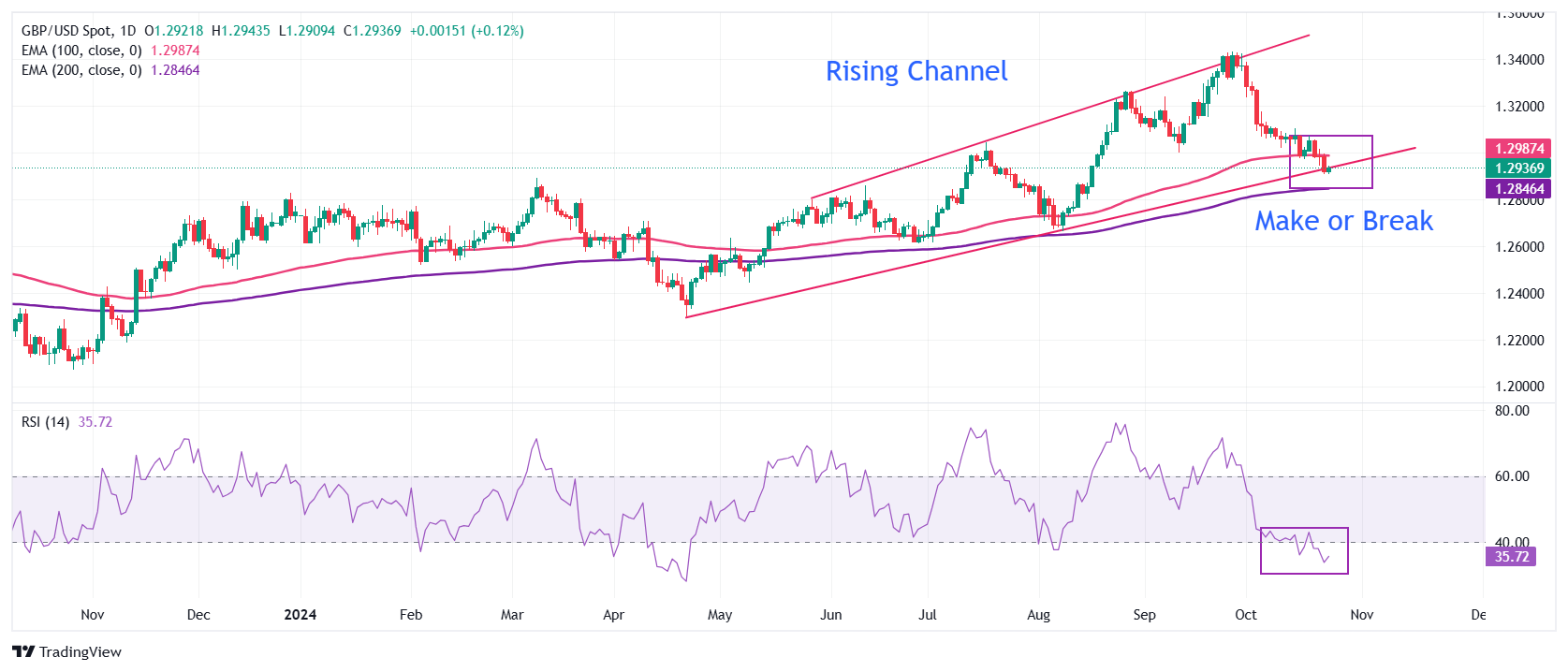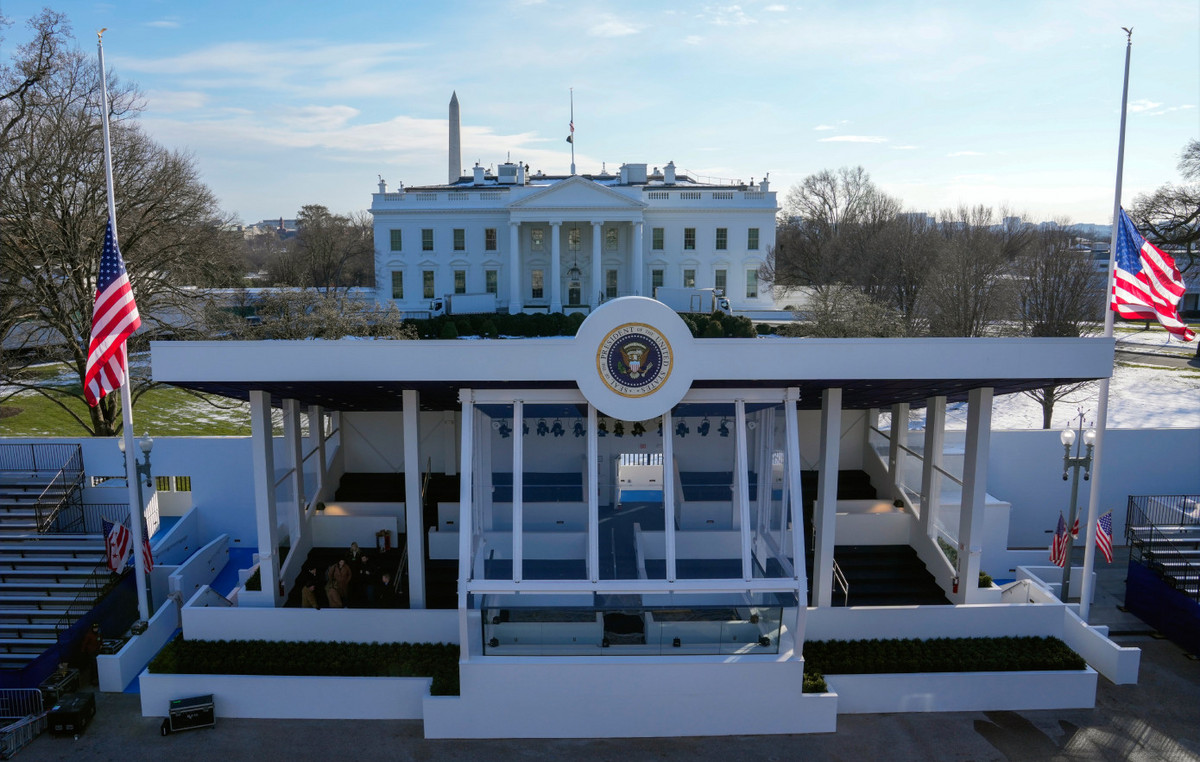- The British pound is trading in a limited range as investors await preliminary UK PMI data for October.
- Investors await BoE’s Mann and Bailey speech for fresh guidance on interest rates.
- Uncertainty over the US presidential election continues to weigh on risk assets.
The British Pound (GBP) trades sideways against its major peers in the London session on Thursday, as investors await preliminary S&P Global/CIPS United Kingdom (UK) Purchasing Managers’ Index (PMI) data for October, which will be published at 08:30 GMT.
The PMI report is expected to show that overall business activity expanded at a moderate pace. Activities in the manufacturing sector are estimated to have increased, but at a slower pace, to 51.4 from 51.5 in September. In the same period, the services PMI is expected to have grown to 52.2, but below the previous release of 52.4. Signs of continued expansion in economic activity will indicate a robust economic outlook.
The outlook for Sterling is expected to remain volatile as Bank of England (BoE) Governor Andrew Bailey expressed confidence that inflation will slow faster than expected. “Disinflation is happening, I think, faster than we expected, but we still have genuine doubts about whether there have been some structural changes in the economy,” Bailey said during the Institute of International Finance event, Bloomberg reported.
Bailey’s comments have boosted dovish bets on the BoE. Based on market speculation, traders expect the BoE to cut interest rates in November and are very confident of repeating the move in December.
In today’s session, BoE Monetary Policy Committee (MPC) member Catherine Mann is scheduled to speak at 13:00 GMT. Mann, a hardliner, was one of four MPC members who voted to leave interest rates unchanged in August, the only time the BoE has cut its key interest rates this year. At 19:45 GMT, Governor Bailey will deliver the Mike Gill Memorial Lecture at the US Commodity Futures Trading Commission (CFTC).
Daily Market Summary: British Pound Continues Down Against US Dollar
- The British pound is trading near a new two-month low, around 1.2950 against the US dollar (USD) in European trading hours on Thursday. GBP/USD remains lower as the US dollar clings to gains due to a slight decline in market expectations that the Federal Reserve (Fed) will cut interest rates at each of the policy meetings remaining this year. The US Dollar Index (DXY), which tracks the value of the dollar against six major currencies, is holding gains near a new 12-week high around 104.50.
- According to the CME FedWatch tool, the probability that the central bank will reduce interest rates by 50 basis points to 4.25%-4.50% by the end of the year has decreased slightly to 68.3% from 71.7% a week ago. The tool shows that traders have priced in a 25 basis point rate cut in November, but are not entirely sure of a similar move in December.
- Meanwhile, growing uncertainty over the outcome of the US presidential election, which will be held in less than two weeks, has enhanced the appeal of the US dollar as a safe haven. The latest national polls show a fierce competition between former President Donald Trump and current Vice President Kamala Harris.
- In Thursday’s New York session, investors will pay close attention to preliminary US S&P Global PMI data for October, due at 13:45 GMT. The manufacturing and services PMI are estimated to have contracted and expanded, respectively, but at a slower pace.
Technical Analysis: British Pound Falls Near 1.2900
The British Pound is at a critical point near the lower boundary of an Ascending Channel chart formation on the daily time frame. The GBP/USD pair could face strong selling pressure if it fails to hold.
Cable’s short-term trend has worsened further as it has fallen below the 100-day EMA, which is trading around 1.2990.
The 14-day Relative Strength Index (RSI) falls near 35.00, signaling active bearish momentum.
Looking down, the 200-day EMA near 1.2845 will be an important support zone for the British Pound bulls. To the upside, Cable will face resistance near the psychological figure of 1.3000 and the 20-day EMA around 1.3060.
The British Pound FAQs
The British Pound (GBP) is the oldest currency in the world (AD 886) and the official currency of the United Kingdom. It is the fourth most traded foreign exchange (FX) unit in the world, accounting for 12% of all transactions, averaging $630 billion a day, according to 2022 data. Its key trading pairs are GBP/ USD, which represents 11% of FX, GBP/JPY (3%) and EUR/GBP (2%). The British Pound is issued by the Bank of England (BoE).
The most important factor influencing the value of the Pound Sterling is the monetary policy decided by the Bank of England. The Bank of England bases its decisions on whether it has achieved its main objective of “price stability” – a constant inflation rate of around 2%. Its main tool to achieve this is the adjustment of interest rates. When inflation is too high, the Bank of England will try to control it by raising interest rates, making it more expensive for people and businesses to access credit. This is generally positive for sterling, as higher interest rates make the UK a more attractive place for global investors to invest their money. When inflation falls too much it is a sign that economic growth is slowing. In this scenario, the Bank of England will consider lowering interest rates to make credit cheaper, so that companies will take on more debt to invest in projects that generate growth.
The data released measures the health of the economy and may affect the value of the pound. Indicators such as GDP, manufacturing and services PMIs and employment can influence the direction of the Pound.
Another important data that is published and affects the British Pound is the trade balance. This indicator measures the difference between what a country earns from its exports and what it spends on imports during a given period. If a country produces highly in-demand export products, its currency will benefit exclusively from the additional demand created by foreign buyers seeking to purchase those goods. Therefore, a positive net trade balance strengthens a currency and vice versa in the case of a negative balance.
Source: Fx Street
I am Joshua Winder, a senior-level journalist and editor at World Stock Market. I specialize in covering news related to the stock market and economic trends. With more than 8 years of experience in this field, I have become an expert in financial reporting.








